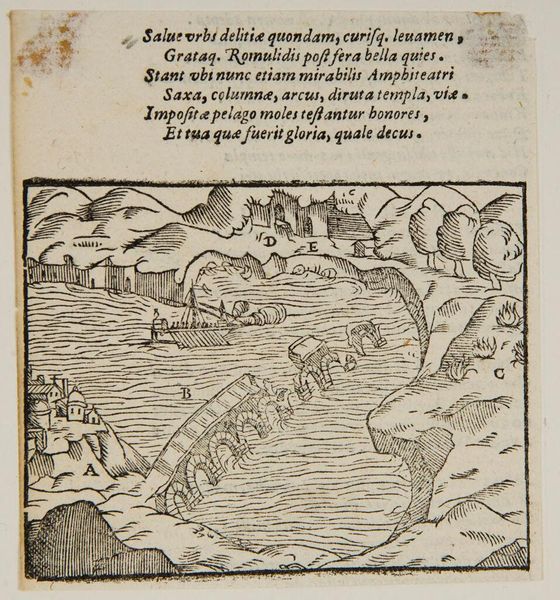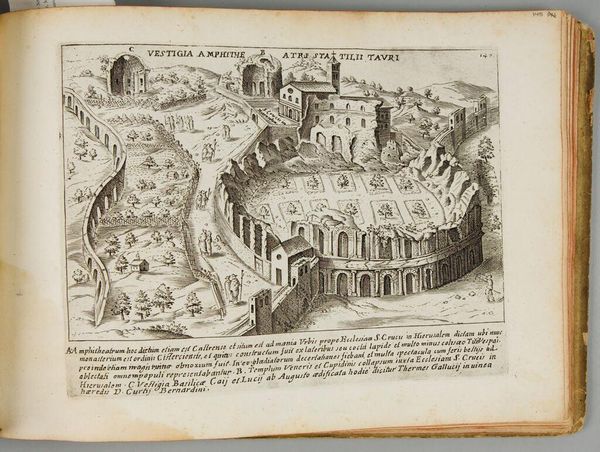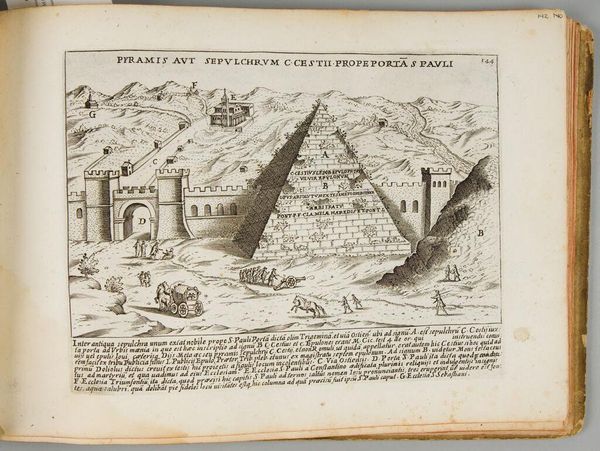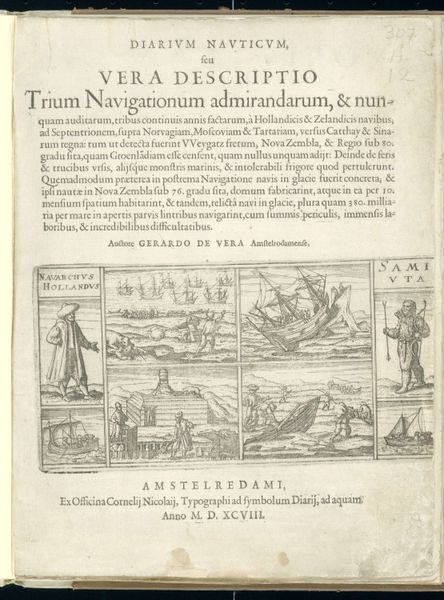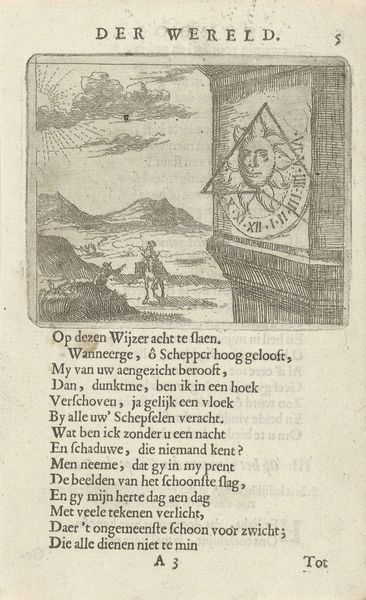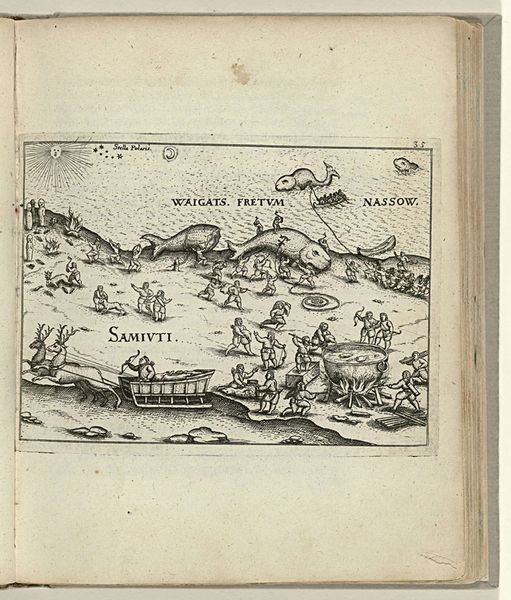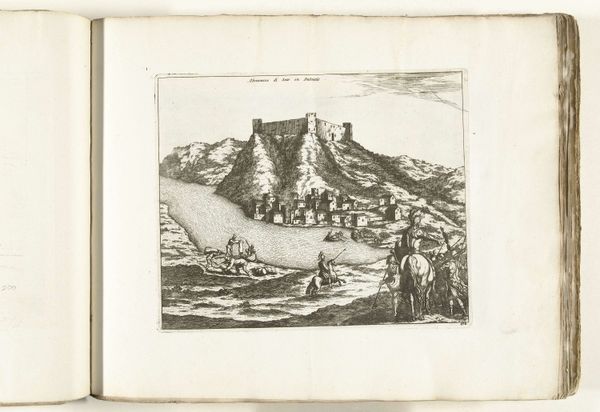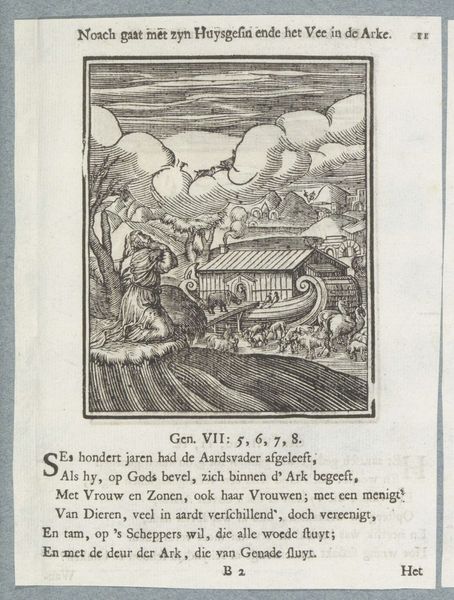
Pratiqve de la Guerre. Contenant l'usage de l'Artillerie, Bombes & Mortiers, Feux Artificiels & Petards, Sappes & Mines, Ponts & Pontons, Tranchees & Travaux, auec l'ordre des Assauts aux Breches. Ensemble vn traite des Feux de Ioye/par le sievr de Malthvs… 1650
0:00
0:00
print, paper, engraving
#
baroque
# print
#
paper
#
history-painting
#
engraving
Dimensions: [10] + 282 + [23] pp.; H: 9 in. (23cm)
Copyright: Public Domain
This is an image from Francis Malthus's "Pratique de la Guerre," a book probably made in France, dating to around the mid-17th century. Consider the nature of the book itself: paper, ink, and the printing press, all relatively new technologies at the time. This was a moment when knowledge was becoming more democratized, moving away from purely handmade manuscripts. The image here, showing the siege of a fortified city with cannons firing, would have been made by carving a block of wood or metal, inking it, and pressing it onto the page. The labor involved in producing such a book was considerable – from the papermakers to the typesetters, printers, and binders. The book itself is a product of early industrialization. And, of course, its subject – warfare – is deeply tied to social issues of power, politics, and consumption, all underwritten by human labor. So, in this object, we see a convergence of craft, technology, and social context. It reminds us that even seemingly straightforward images can be rich with meaning when we consider their making.
Comments
No comments
Be the first to comment and join the conversation on the ultimate creative platform.
